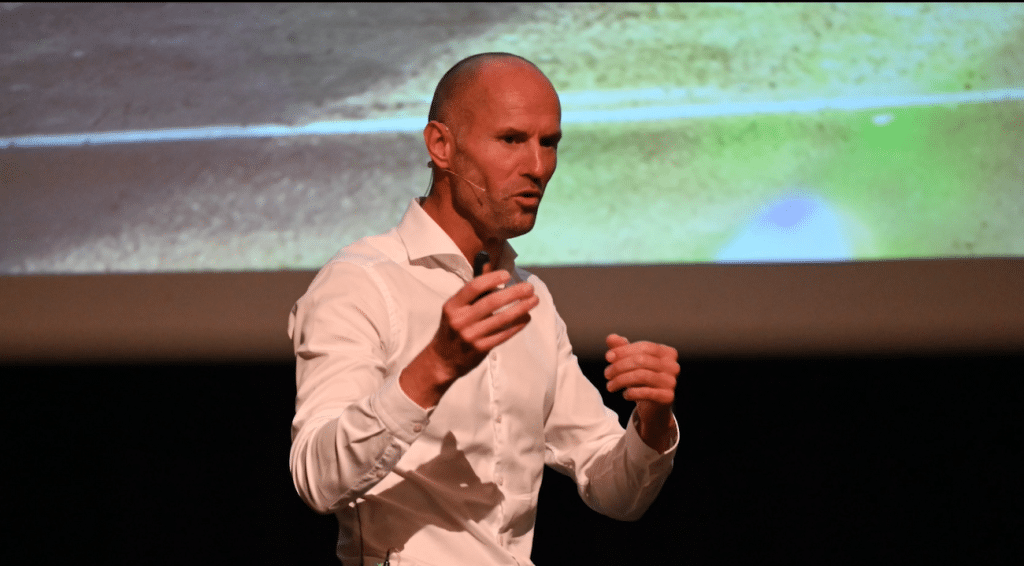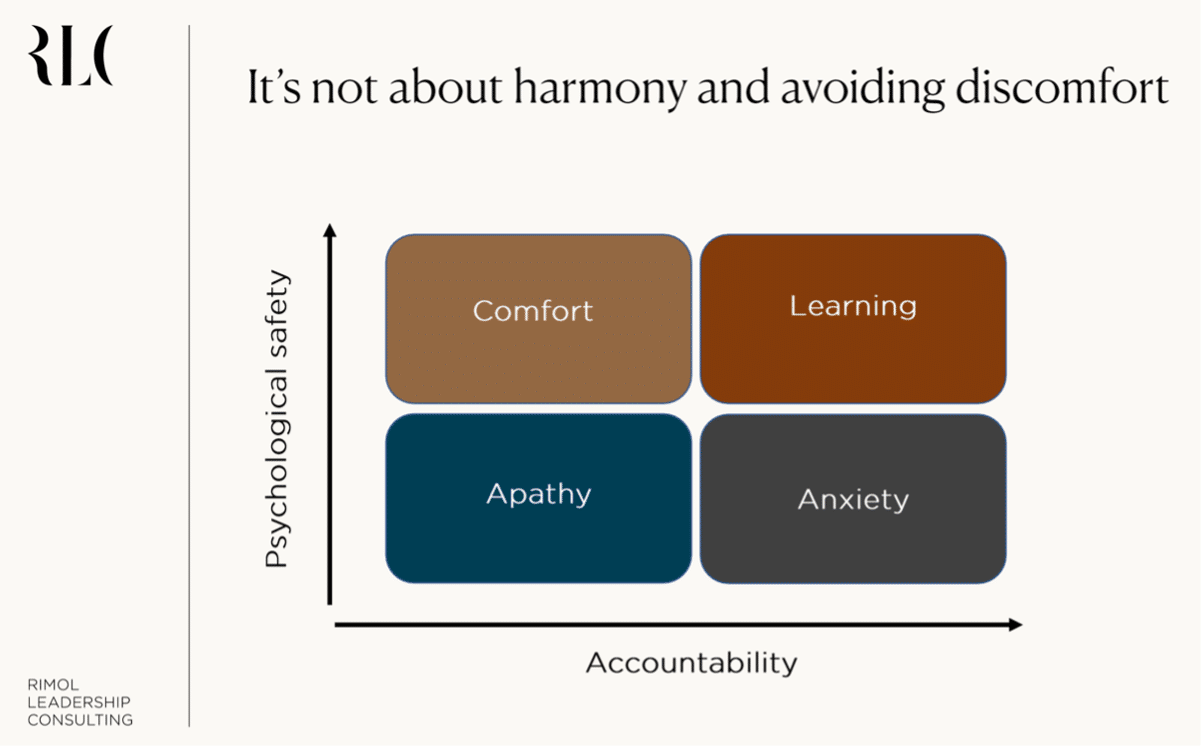
How to build an effective leadership team

What characterizes an effective leadership team that works exceptionally well, especially in Software-as-a Service (SaaS)? A team that delivers results and creates a culture people want to be part of? Rune Rimol has spent 20 years researching the answers, from helping small leadership groups in the Nordics to global companies. Now he shares his experiences.
What is leadership?
For the past three years, Rune has coached leadership talent in our portfolio of fast-paced SaaS companies. Through Rimol Leadership Consulting, he has designed and delivered leadership development processes, as well as assessment and selection solutions, for clients across industries. He has worked with top executives, managers, and specialists in companies such as DnB, Scatec, Statkraft, and Sopra Steria. His experience offers clear insight into what sets strong leaders apart.
“Leadership, at its core, is about influencing the behaviour of others to create results through them. When you make decisions, set a strategy, provide feedback, or lead meetings, the purpose is always to encourage others to act in a way that creates value or desired results. As a leader, you must therefore be conscious of how you influence the environment around you,” says Rune.
Three pillars of effective leadership
To be able to influence and lead others as effectively as possible, Rune highlights three fundamental principles:
1) Self-awareness
You are dependent on self-awareness. Without understanding how you affect others, development and effective leadership become difficult. How are you actually perceived as a leader today?
2) Clarity and adaptability
Your responsibility as a leader is to create clarity in goals, strategy, and expectations, both in the broader context and for each individual. At the same time, you must be able to adjust the course along the way. It is not an either-or proposition, but rather a continuous balance between clarity and adaptability.
3) Relationships and psychological safety
Your ability to influence happens through relationships. Strong relationships and trust develop when you invest time in conversations, challenge others, offer support, admit mistakes, and hold others accountable while genuinely caring. Psychological safety and accountability must go hand in hand. Imagine a leadership meeting where no one dares to ask questions or challenge the status quo. Then you never reach the good ideas. Everyone on the team must be willing to give honest feedback, while also holding each other accountable to a high standard. Don’t beat around the bush; say it clearly. Be “tough on performance”, but “soft on people.”
Classic pitfalls for leaders
Rune has worked with a diverse range of leaders at various levels and across different industries. While many leaders believe their challenges are unique, Rune’s experience shows strikingly common patterns across industries. When asked whether any classic pitfalls are easy to fall into, the answer varies, but some tendencies stand out.

Invest enough time in building relationships
“A recurring theme is that many do not invest enough in relationship building and in the conversation as a tool. Leaders underestimate the importance of conversation as a way to help others perform and develop.. Regular follow-up can provide the necessary leadership support. For example, through regular 1:1 meetings with everyone you manage directly. Sit down with people, put away the computer, and listen actively. Be curious. Ask to explore and listen to understand, rather than to make a point and respond.”
When was the last time you had a conversation with your team that went deeper than status and deliveries?
You must own the message to inspire
Another tendency is not turning the bigger picture into your own. That is, you only repeat information about goals and strategy, rather than making it your own message.
“Reframe the strategy with your own words so that you can tell the story with energy and credibility. It must provide clarity but also inspire in a way that makes those around you believe that you have taken 100% ownership. Everyone on the team should get a clear and specific picture of what applies to us, while also strongly believing in what we want to achieve together,” Rune states.
Be aware of your pitfalls
“You can also see countless pitfalls in one direction or the other. For example, if we think about “tough on performance,” “soft on people” to create psychological safety, very often, we are better at one of these than at balancing both. Leaders frequently accept behaviour that is not okay or not good enough, because we become too lenient and don’t want to confront it. A leader who always avoids conflict risks that minor problems grow large in silence. As a leader, you should be aware of your pitfalls so you can adjust your behaviour,” he continues.

SaaS leadership team
After running leadership courses for SaaS leaders for some years, Rune highlights the participants as highly curious, engaged, and skilled leaders. There are many individual differences among the participants, making it challenging to draw a homogeneous conclusion. Nevertheless, certain tendencies stand out when working in fast-growing SaaS companies.
Slow down to speed up
“One tip for SaaS leaders is to take the time to lead! There is a tendency for things to move very fast. As a company, you are dependent on delivering quickly. Still, you can benefit from slowing down in certain areas,” Rune recommends.
Slow down in areas such as:
- Setting clear goals
- Managing expectations
- Refining strategy
- Operationalizing leadership team purpose
“Some at the top may think it is clear, but many others do not share the same view. You should be certain that this is clear enough. Take the time to pause. What is most important for your team in the following months? What should we as a leadership team address, and what tasks should we deliver on in the next 6–9 months? Use conversations as a tool,” he continues.
Ensure collaboration across the leadership team
Rune suspects there is a potential for improvement in cross-functional collaboration, even if it is not a strong trend.
“Key functions in the organization must collaborate effectively across. There must be a clear, common goal, a division of responsibilities, and an understanding of interdependencies. Sometimes tasks get stuck because no one perceives them as theirs. If we don’t take the interfaces and interdependencies between us seriously enough, it is challenging to handle things effectively. Your teams should therefore agree on what we are collectively accountable for delivering and what responsibilities each of you has in different parts of the delivery. How do we need each other, and how do we ensure follow-up from now on?”
How to develop your leadership skills
Rune divides the leadership development program into four parts, covering how to lead yourself, others and your team, as well as building a strong culture. In each part, he includes practical tasks and frameworks that help you develop as a leader at different levels.
“As a management team, you should invest time in clarifying your team’s purpose and in operationalizing this into your most important team jobs. You should also get to know and understand each other. Share the manual on yourself, who you are as a person and how you work. You need to agree on the norms and culture you want in your team and then both demonstrate and reinforce this.. Be curious and ask for continuous feedback, Last but not least, you need to invest in learning from your experiences – identifying what’s working well and making the necessary adjustments to improve” Rune explains when asked what concrete activities you should prioritize in a management team.
Conclusion on an effective leadership team
You cannot build effective leadership teams overnight. However, with self-awareness, clarity, and strong relationships, you can cultivate a culture that not only delivers results but also endures over time. Anyone could copy your strategies and products. Your culture, on the other hand, can never be copied. If you manage to create a culture in the direction you need, that is a key part of achieving effective leadership.
Want to learn more?
How do Nordic software companies scale worldwide? The Viking Growth newsletter shares practical insights and strategies to help you learn what works.